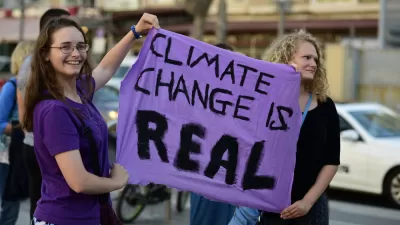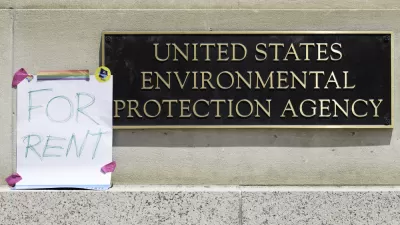A comprehensive review of the 100 largest cities in the United States shows which mayors have followed up on pledges to cut carbon emissions.

In recent years, more than ever, municipalities and state governments have pledged to take action against climate change and reduce greenhouse emissions in their jurisdictions.
"Since 1991, over 600 local governments in the United States have developed climate action plans that include greenhouse gas inventories and reduction targets, reflecting growing public concern about the consequences of a warmer planet. Recently, this local action has been accelerating. But despite numerous studies, we still don’t know if all this effort is working," writes Mark Muro.
Brookings Institution researchers explored local actions to reduce emissions and which of the nation's 100 largest cities are walking the walk when it comes to addressing climate change.
"About two-thirds of cities with climate pledges are currently lagging in their targeted emissions cuts, while 13 others don’t appear to have available emissions tracking in place," Muro reports.
Even partial adherence to climate pledges has eliminated about 365 million metric tons of carbon pollution according to Muro. Still, it's unrealistic to believe that meeting long-term goals related to climate change will be achieved without a robust and diligent review and assessment on a national scale.
If the United States reenters the Paris Climate Agreement, the burden still rests with individual cities. "[D]iplomacy won’t matter much if the rest of the world doesn’t believe our promises will stick and doesn’t see climate action in areas that have resisted thus far. The solution to this problem isn’t more diplomacy, but more mayors making (and delivering on) compelling emission reductions pledges," as Muro puts it.
FULL STORY: Cities are pledging to confront climate change, but are their actions working?

Study: Maui’s Plan to Convert Vacation Rentals to Long-Term Housing Could Cause Nearly $1 Billion Economic Loss
The plan would reduce visitor accommodation by 25% resulting in 1,900 jobs lost.

Alabama: Trump Terminates Settlements for Black Communities Harmed By Raw Sewage
Trump deemed the landmark civil rights agreement “illegal DEI and environmental justice policy.”

Why Should We Subsidize Public Transportation?
Many public transit agencies face financial stress due to rising costs, declining fare revenue, and declining subsidies. Transit advocates must provide a strong business case for increasing public transit funding.

Paris Bike Boom Leads to Steep Drop in Air Pollution
The French city’s air quality has improved dramatically in the past 20 years, coinciding with a growth in cycling.

Why Housing Costs More to Build in California Than in Texas
Hard costs like labor and materials combined with ‘soft’ costs such as permitting make building in the San Francisco Bay Area almost three times as costly as in Texas cities.

San Diego County Sees a Rise in Urban Coyotes
San Diego County experiences a rise in urban coyotes, as sightings become prevalent throughout its urban neighbourhoods and surrounding areas.
Urban Design for Planners 1: Software Tools
This six-course series explores essential urban design concepts using open source software and equips planners with the tools they need to participate fully in the urban design process.
Planning for Universal Design
Learn the tools for implementing Universal Design in planning regulations.
Smith Gee Studio
Alamo Area Metropolitan Planning Organization
City of Santa Clarita
Institute for Housing and Urban Development Studies (IHS)
City of Grandview
Harvard GSD Executive Education
Toledo-Lucas County Plan Commissions
Salt Lake City
NYU Wagner Graduate School of Public Service





























